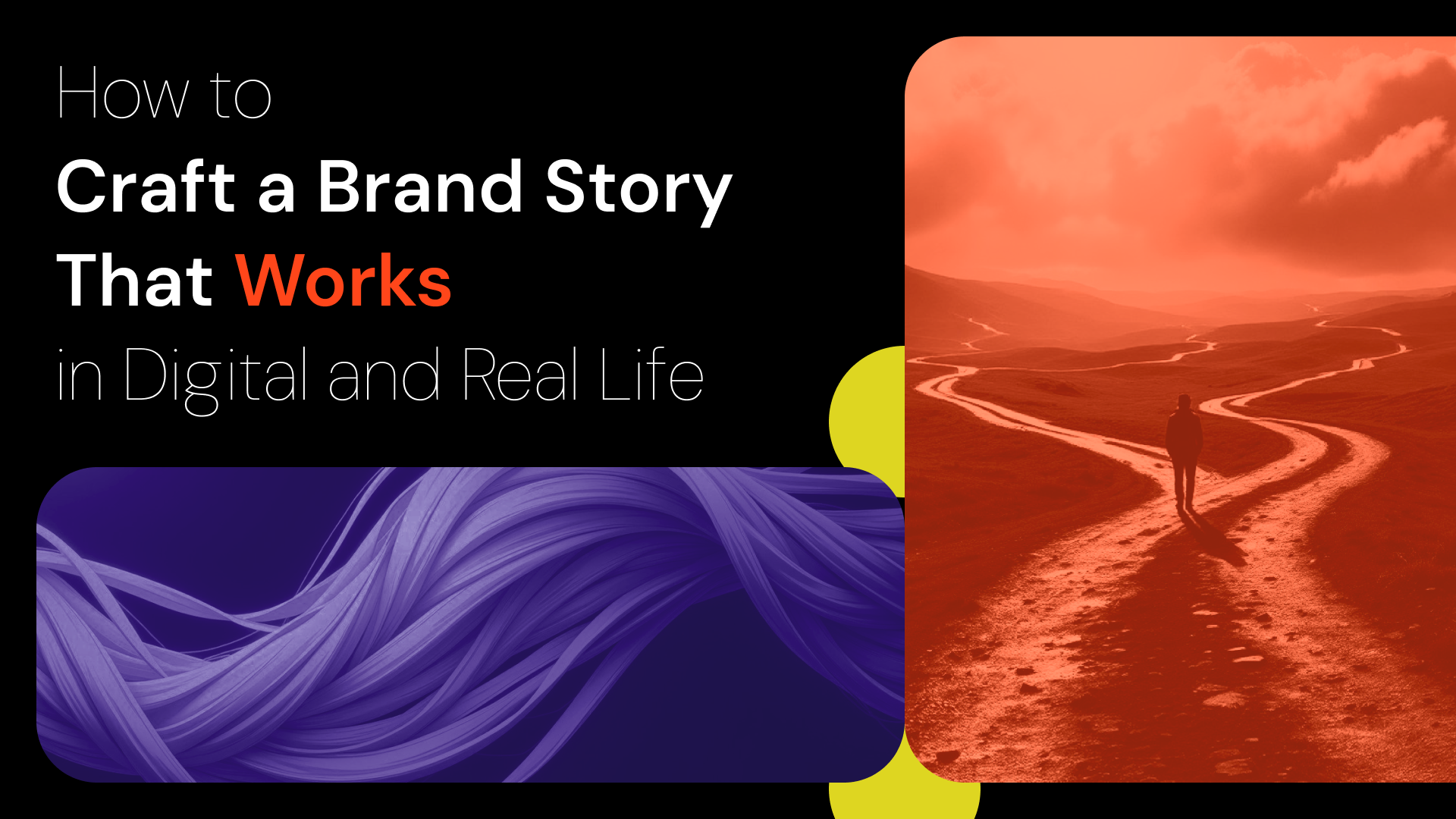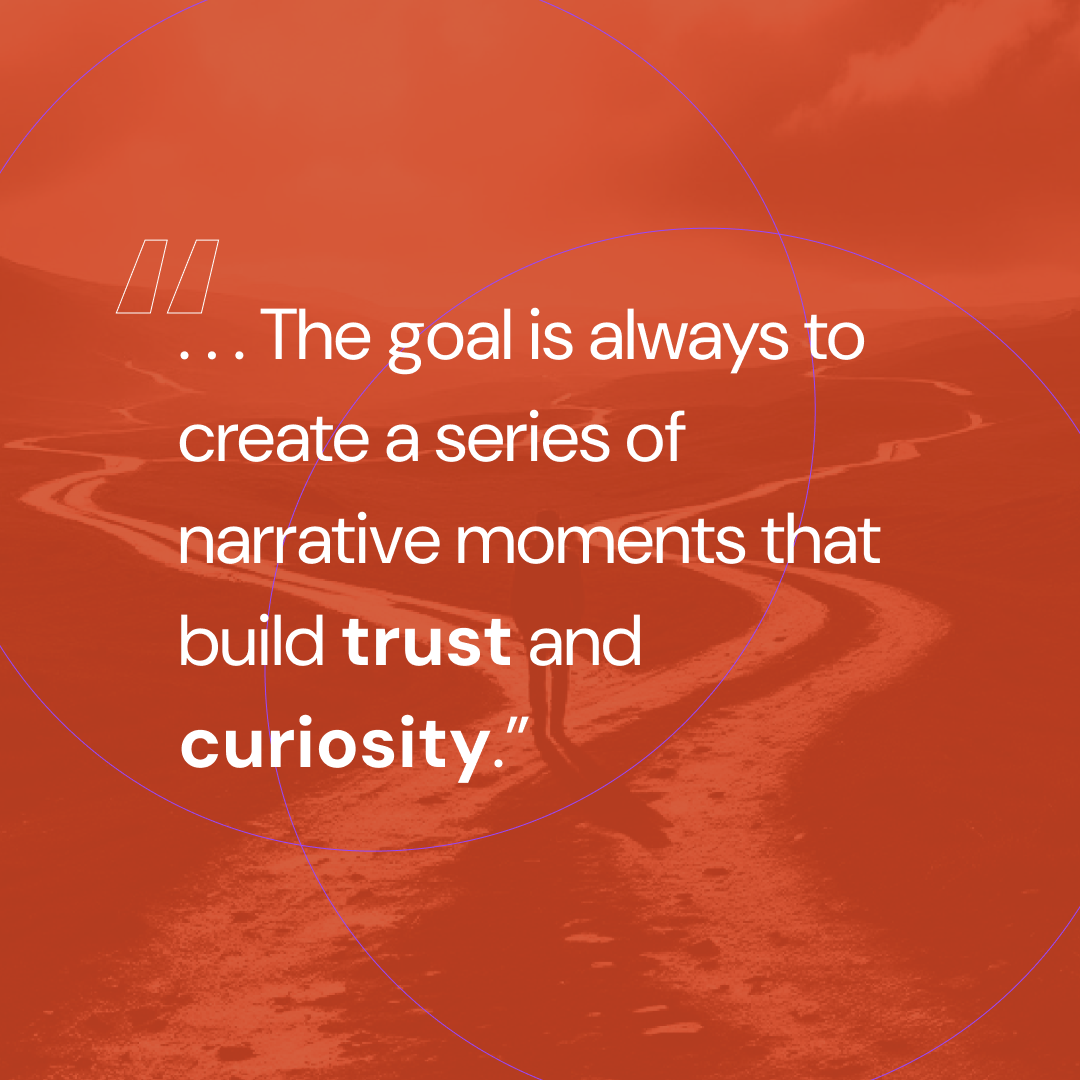
How to Craft a Brand Story That Works in Digital and Real Life

By Justin Sirotin, founder and CEO of OCTO
For storytelling to be truly effective, it can’t be confined to marketing departments or brand videos. It shows up in every part of your business, especially where people meet your brand for the first time. And today, that usually happens in one of two places: your website or an event.
You’d think these two spaces (one virtual, one physical) would require entirely different strategies, but in practice, they run on the same engine. Your website and your trade show booth are both moments of introduction. They’re about fostering connections as opposed to grabbing attention.
And the best ones follow the same three-layer narrative structure.
Layer One: Create the Moment That Stops Them
Your first job is an interruption, but not the loud kind. It's about creating just enough friction to break someone’s scrolling, walking, or browsing autopilot. At a trade show, for example, this might be a surprising physical experience. On the other hand, online, it's a compelling opening visual or message that immediately signals: “This is not the same old thing.”
The brands that do this well aren't always flashy; they're intentional. We won a design award for creating a trade show experience for a company that specializes in acoustic panels. Not exactly thrilling stuff, but their entire booth was built out of their product—walls, floor, ceiling—and stepping into it was like stepping into silence. In a convention center packed with noise, that moment of calm became unforgettable.
Your website should work the same way. The landing page is your silence and your moment of unexpected clarity. Does it invite the right people to stop and lean in—or do they bounce before you’ve said a word?
Layer Two: Invite People Into a Story That Feels Like Theirs
Once you’ve earned someone’s attention, you have to hold it through a combination of relevance and empathy. While conversations about product specs and feature grids have their place and time, those conversations should never be the initial icebreaker.
At OCTO, we often discuss building branches instead of funnels. Whether it’s a homepage or a trade show booth, your narrative should give people distinct paths to explore based on who they are and what they care about.
That means mapping personas before you ever write copy or design an experience. What does this person need to feel in the first ten seconds? What should they want to do next? If you do this right, the brand story feels both professional and personal.
Digital spaces allow you to segment that journey. Physical spaces rely more on cues, materials, and guided flow. But in both cases, the goal is always to create a series of narrative moments that build trust.

Layer Three: Make the Ask, Without Killing the Story
Eventually, your story needs to lead somewhere. But too often, brands switch into “sales mode” right when people are finally leaning in. They drop the story and dump the slide deck, which can be jarring and can kill your momentum.
Instead, think of your call to action as the next natural step in the story. It is not a hard sell, but it is an invitation to continue. In a trade show booth, that might mean sitting down for a deeper demo after someone has explored an interactive installation. On a website, it might mean a thoughtfully placed link to schedule a walkthrough, right at the moment when someone has understood the value you offer.
When the story has been well-crafted from the beginning, you don’t have to force the conversion. It becomes the obvious next step in the equation.
Final Takeaway

Whether you’re building a landing page or a live experience, your storytelling framework should always begin with a simple question: What do I want someone to feel at the end of this?
The structure doesn’t change—surprise, engage, convert—but the medium forces discipline. In digital spaces, you must cut through noise. In physical ones, you must earn time. Either way, the brands that connect are the ones that understand story not as decoration, but as infrastructure.
Need help crafting your narrative experience? OCTO partners with startups and scale-ups to build stories that resonate across media. Get in touch to learn how we can help your brand connect with clarity and conviction.
